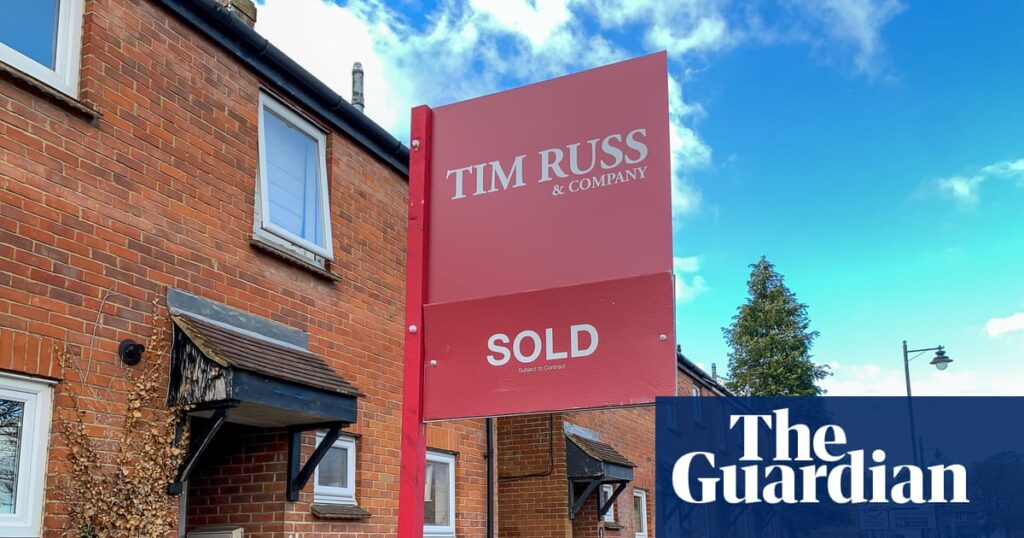UK house prices rose at the fastest monthly rate this year in July as mortgage rates eased and banks offered bigger home loans, according to the lender Halifax.
The average property price grew by 0.4% in July to £298,237, Halifax found, ahead of an expected 0.3% rise.
Cheaper mortgage rates and rising wages have helped to revive the property market, the lender said.
The figures were released as the Bank of England’s monetary policy committee voted to cut base rates by a quarter point to 4%.
Amanda Bryden, the head of mortgages at Halifax, said falling mortgage rates, combined with banks’ more flexible affordability assessments, had resulted in “a housing market that continues to show resilience, with activity levels holding up well. “We expect house prices to follow a steady path of modest gains through the rest of the year.”
She said in the second half of the year there would be a rise in homeowners coming to the end of their fixed-rate deals taken out during the pandemic when the base rate was as low as 0.1%.
“While most borrowers coming to the end of five-year, fixed-rate mortgage deals will see their monthly repayments rise, the extent of this will vary across households,” she said.
“Those coming off a two-year fixed rate are very likely to see their monthly payments come down, as they originally locked in rates during the peak that followed the 2022 mini-budget.
“We’re unlikely to see a significant impact on house prices, but it may influence market dynamics if prospective home movers choose to delay plans as a result of tighter budgets.”
Richard Donnell, the executive director at the property portal Zoopla, said the rate cut was unlikely to make a big difference to the cost of mortgages for homebuyers.
“The price of fixed-rate mortgages already factors in the future path of base rates meaning average mortgage rates are likely to remain broadly where they are today,” he said.
The average two-year, fixed rate for a buyer with a 20% deposit is now 4.4%, compared with 5.2% this time last year, according to analysis by the rival portal Rightmove.
after newsletter promotion
Tom Bill, the head of UK residential research at Knight Frank, said the modest growth in house prices in July suggested the market was “getting back on its feet” after disruption during “April’s stamp duty cliff-edge”.
Temporary stamp duty cuts in England and Northern Ireland ended in April, adding thousands of pounds to the cost of many transactions.
Separate figures from Nationwide last week found that house prices rose by 0.6% in July to an average of £272,664.
Halifax found that in Northern Ireland, average house prices rose by 9.3% in the past year to £214,832, the strongest rate across the UK. Scotland also reported a 4.7% growth in July to £215,238, while in Wales prices rose by 2.7% to an average of £227,928.


